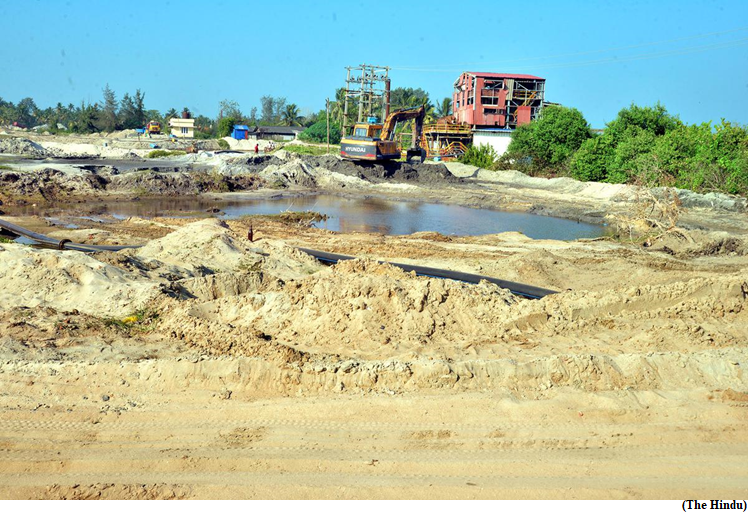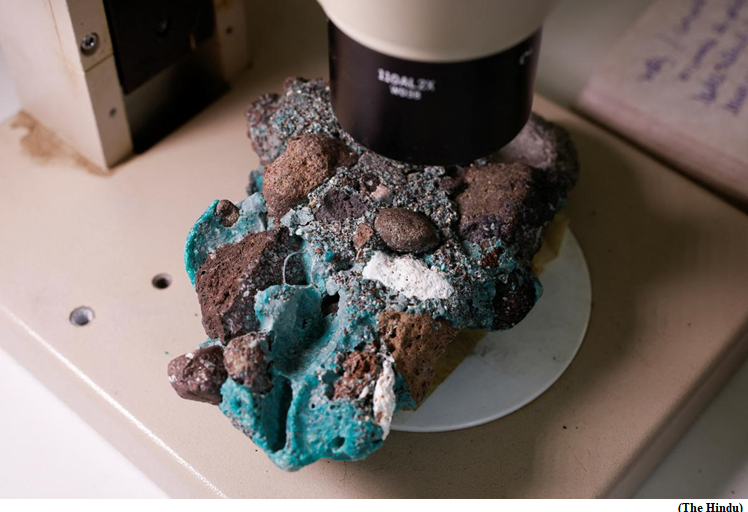ICC issues arrest warrant for Vladimir Putin for war crimes in Ukraine (GS Paper 2, International Organisation)

Why in news?
- Recently, the International Criminal Court issued an arrest warrant for war crimes for President Vladimir Putin and a second Russian official.
Why did the International Criminal Court issue the warrants?
- The court says Putin bears individual criminal responsibility for the abduction and deportation of Ukrainian children since Russia’s full-scale invasion began in February 2022.
- The court also issued a warrant for Maria Lvova-Belova, Russia’s commissioner for children’s rights, who has been the public face of a Kremlin-sponsored program in which Ukrainian children and teenagers have been taken to Russia.
- A New York Times investigation published in October identified several Ukrainian children who had been taken away under Russia’s systematic resettlement efforts. The children described a wrenching process of coercion, deception and force. Russia has defended the transfers on humanitarian grounds.
What is the International Criminal Court?
- The International Criminal Court was created two decades ago as a standing body to investigate war crimes, genocide and crimes against humanity under a 1998 treaty known as the Rome Statute.
- Previously, the United Nations Security Council had established ad hoc tribunals to address atrocities in places such as the former Yugoslavia and Rwanda.
- The court is based in The Hague, a Dutch city that has long been a center for international law and justice.
- Many democracies joined the International Criminal Court, including close American allies including Britain. But the United States has long kept its distance, fearing that the court might one day seek to prosecute American officials, and Russia is also not a member.
What does the warrant mean for Putin?
- Human rights groups hailed the warrant as an important step toward ending impunity for Russian war crimes in Ukraine, but the likelihood of a trial while Putin remains in power appears slim, because the court cannot try defendants in absentia and Russia has said it will not surrender its own officials.
- Russia’s Foreign Ministry quickly dismissed the warrants, noting that it is not a party to the court. Still, the warrant for Putin’s arrest deepens his isolation in the West and could limit his movements overseas.
- If he travels to a state that is party to the ICC, that country must arrest him, according to its obligations under international law.
Powers with ICC:
- The court has no power to arrest sitting heads of state or bring them to trial, and instead must rely on other leaders and governments to act as its sheriffs around the world. A suspect who manages to evade capture may never have a hearing to confirm the charges.
Background radiation higher in Kerala, but no risk: study
(GS Paper 3, Science and Tech)
Why in news?
- As per a recent pan-India study by scientists at the Bhabha Atomic Research Centre (BARC) background radiation levels, or that emitted from natural sources such as rocks, sand or mountains, are nearly three times more than assumed in parts of Kerala.
- This does not, however, translate to an elevated health risk.

Gamma radiations:
- Radiation results from the disintegrating nucleus of an unstable element and these can be from anywhere, including from inside our bodies to the constituents of matter.
- Gamma rays are a kind of radiation that can pass unobstructed through matter. Though extremely energetic, they are harmless unless present in large concentrated doses. It’s similar to heat from a fire feeling pleasant until a sustained, concentrated burst can scald or worse, ignite.
- Especially around nuclear plants, gamma radiation levels are monitored as also the average quantity of radiation that plant workers are exposed to.
Safe levels:
- The International Atomic Energy Agency (IAEA) specifies maximum radiation exposure levels and this has also been adopted by India’s atomic energy establishment.
- Public exposure should not exceed 1 milli-Sievert every year, those who work in plants or are by virtue of their occupation shouldn’t be exposed to over 30 milli-Sievert every year.
Exposure levels in India:
- The present study found that average natural background levels of gamma radiation in India was 94 nGy/hr (nano Gray per hour) (or roughly 0.8 milli sievert/year).
- The last such study, conducted in 1986, computed such radiation to be 89 nGy/hr. 1 Gray is equivalent to 1 Sievert, though one unit refers to radiation emitted and the other to biological exposure.
- However, the 1986 study measured the highest radiation exposure at Chavara, Kerala at 3,002 nGy/year.
- The present study found that the levels in Kollam district (where Chavara is situated) were 9,562 nGy/hr, or about three times more. This computes to about 70 milliGray a year, or a little more than what a worker in a nuclear plant is exposed to.
Why higher radiation levels in South India?
- The higher radiation levels in Kollam are attributed to monazite sands that are high in thorium, and this for many years, is part of India’s long-term plan to sustainably produce nuclear fuel.
- In southern India, because of the presence of granite and basaltic, volcanic rock has higher levels of radiation from uranium deposits.
Why have plastic rocks been found on the remote Brazilian island of Trindade?
(GS Paper 2, International Relation)
Why in news?
- A recent discovery of rocks made of plastic debris in the remote Brazilian Island of Tridade, which hosts a range of rare marine species, has sparked alarm among scientists.
- The fact that plastic had reached the secluded volcanic island known for its unique geology was terrifying.

What are the geological features of Trindade Island?
Flora & fauna:
- Trindade surfaced owing to volcanic activity under the Atlantic Ocean about three million years ago. Trindade, along with the Martim Vaz archipelago about 40 km away, hosts many species of native flora and fauna including seabirds and marine creatures.
- Trindade is known for being one of the most important conservation and nesting spots, both in Brazil and globally, for green sea turtles (Chelonia mydas), hosting nearly 1,800 nests annually on a small stretch of land.
- It is also known for hosting native seabirds like the Trindade Petrel, and the great frigatebird, which is otherwise only found in the Indo-Pacific and not the Atlantic. The surrounding region also hosts species of sharks, dolphins, and corals.
Formation:
- Its formation due to volcanic activity makes its terrain unique, reaching a 600 m elevation at multiple points while having surrounding oceanic depths of 6000 m.
- The island is considered one of the most recent manifestations of alkaline volcanic activity in Brazil. It is at the eastern end of a chain of guyots, or submarine volcanic mountains with flat tops, extending east to west about 1,100 km from the continental shelf off Brazil’s coast.
- The island was first sighted in 1502 by a Portuguese sailor and was first inhabited by humans only in 1730 when Azorean communities colonised the Island.
- Currently, Trindade is a protected area not inhabited by any humans except for a small Brazilian Navy Crew which oversees the waters. It is also free of tourist activity.
How did plastic rocks get formed on the remote Island?
- The melted plastic became intertwined with rocks on the island. Plastic reaching Trindade despite it being hundreds of miles away from the mainland was evidence of humans’ growing influence over the earth’s geological cycles.
- They ran chemical tests on the rocks to determine what kind of plastics were in these rocks called “plastiglomerates” since they are made of a mixture of sedimentary granules and other debris held together by plastic.
- The scientists also revealed that the spot where they found the plastic rocks is a “permanently preserved area in Brazil, near the place green turtles lay their eggs”.
How bad is marine pollution today?
- While talking about the ecologically damaging discovery, the geologist said this was a clear manifestation of the Anthropocene, a term proposed by scientists to describe the current geological epoch, where humans are knowingly shaping the planet, instead of the usual geological processes which take millions of years.
- The garbage and plastic dumped incorrectly in the oceans are turning into “geological material” and getting preserved in the “earth’s geological records”.
- According to the UN, decades of overuse and a surge in short-lived, single-use plastics, have led to devastating levels of marine pollution. Nearly 12 million tonnes of plastics are swept into the oceans annually and gyres, which are described as ‘islands of plastic’, have cropped up.
- While most plastics remain intact for years and even centuries, some erode to form ‘microplastics’, which are then consumed by marine wildlife and finally humans. Microplastics are plastic particles less than 5mm in diameter. They contribute to over 80% of ocean debris.




